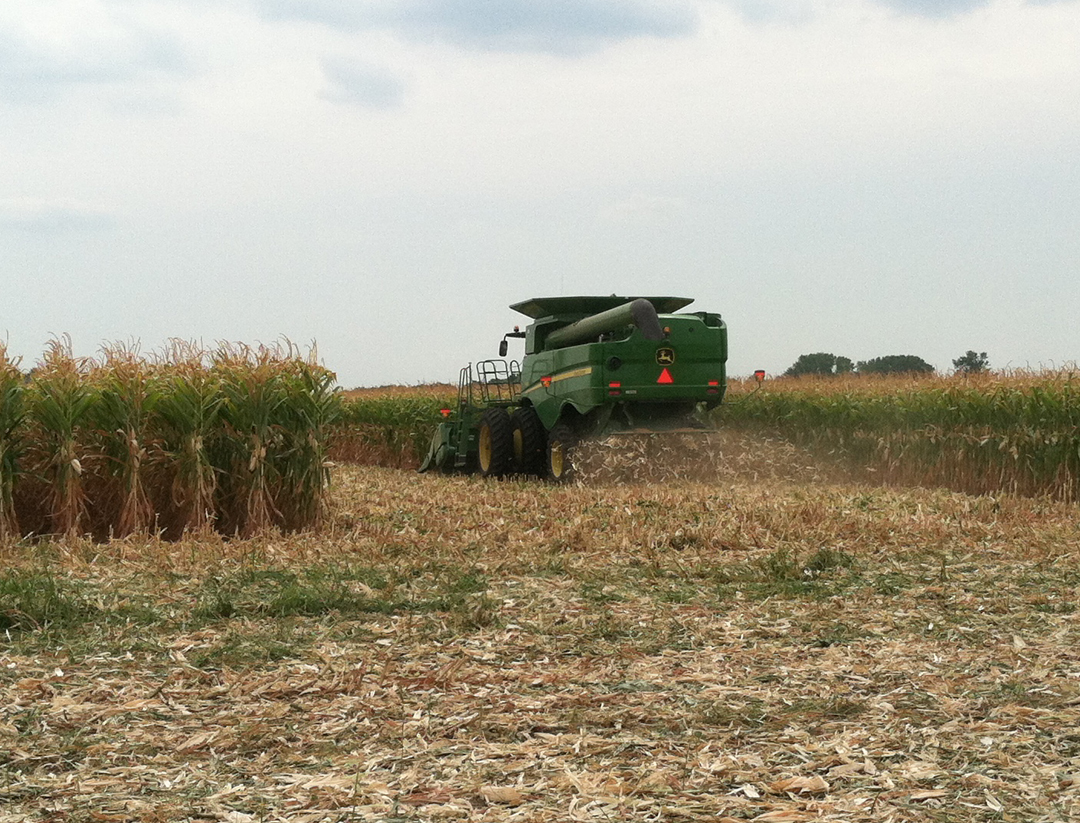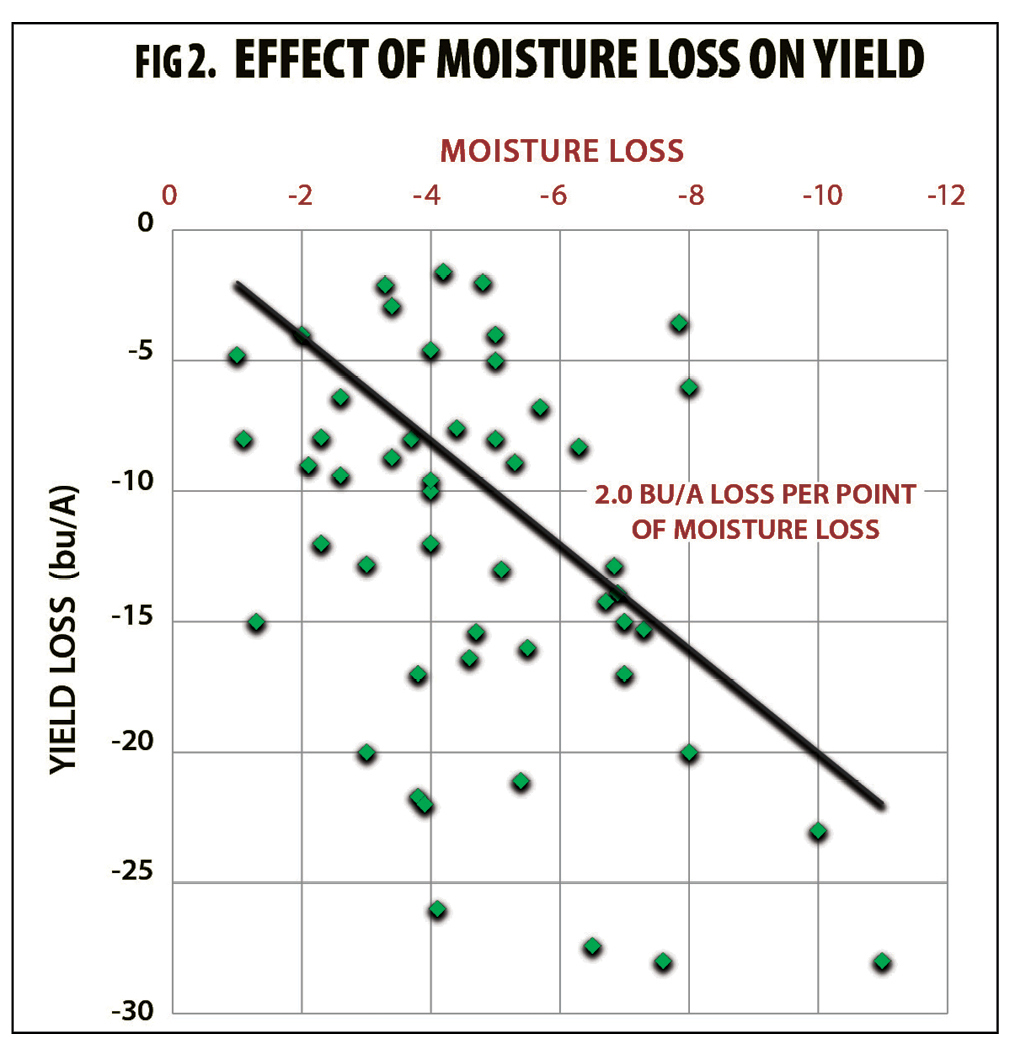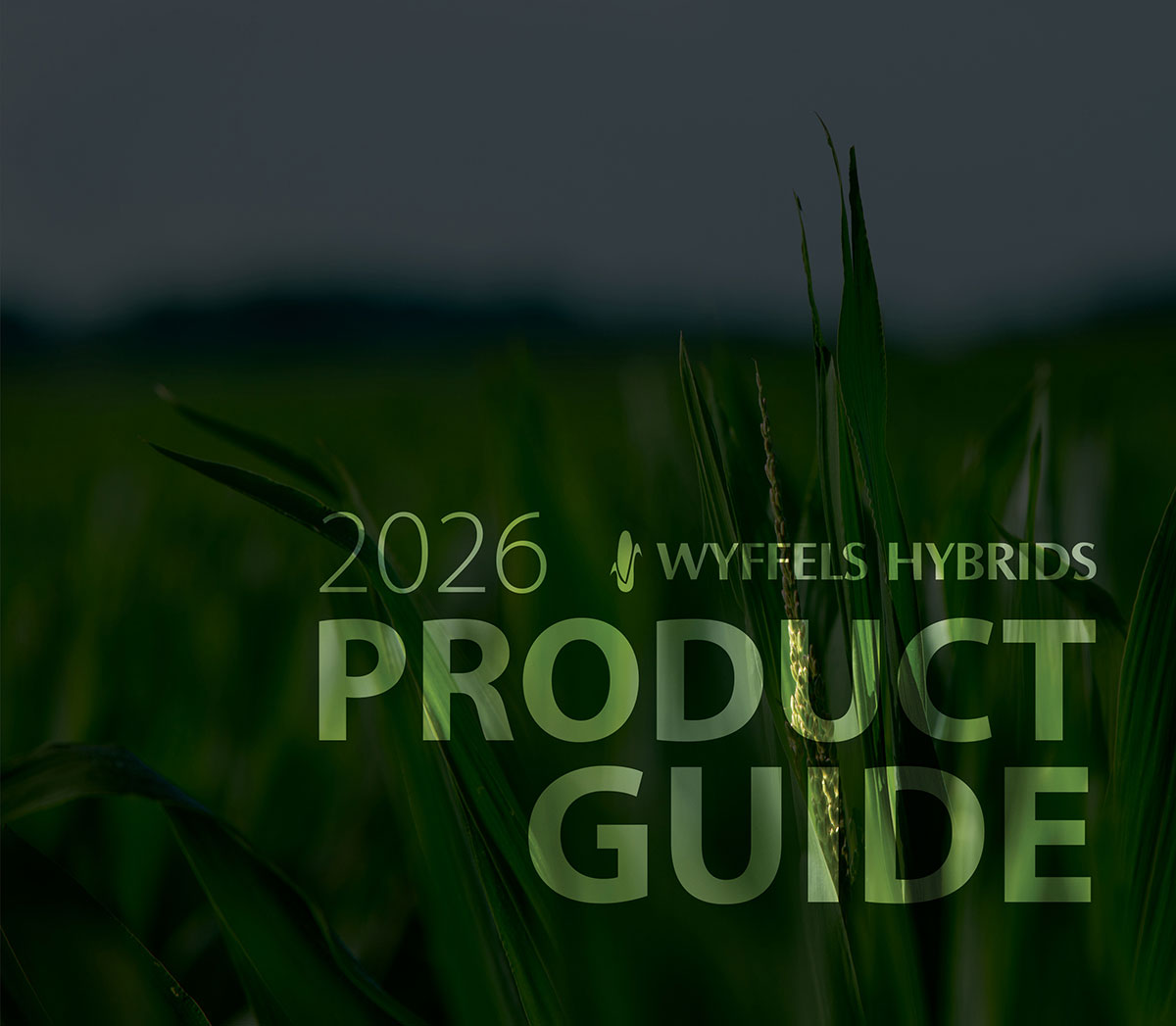As harvest approaches, it’s important to have a plan for which fields should be top priority for harvest. Stalk lodging and mechanical harvest loss can eat into yield and profits. Corn standability is better and the risk of harvest loss is reduced at harvest moistures in twenties compared to the teens, so don’t delay your start to harvest. Scout fields to determine stalk quality, yield potential, and maturity progression to help you decide which fields should be harvested first.
Stalk Inspection
The best way to determine stalk integrity is to get out into the fields and scout. Inspecting stalks for integrity can be done any time. A good starting point is to simply do a “push test” whenever you walk out into a field. If the stalk and leaves are still green, dig up a plant and carefully split the stalk lengthwise down through the crown. Look for discolored tissue. Healthy stalk tissue will be white and a healthy crown will be off-white to tan and firm, similar to a potato. After black layer the plant will begin to naturally degrade. If the stalk is straw colored, simply pinch the stalk 6 inches above the soil. If the rind crushes easily then stalk strength is weak and the field should be harvested sooner rather than later.
Stalk Cannibalization
Once a kernel reaches the late milk stage it’s at less risk of being aborted by the plant, and the plant “doubles down” on its obligation to fill those kernels, even at the expense of plant integrity. The more kernels there are, the greater the obligation.
If the demand of the kernels outpaces what the plant can provide via photosynthesis it will begin to remobilize sugars and nutrients from root, leaf and stalk tissue to the kernels in a process called cannibalization. Cannibalization lessens stalk integrity and makes the stalks more prone to stalk rot pathogens and lodging. Fields with cannibalization occurring should be harvested first, even if grain moisture is in the mid to high twenties.
Where to Focus Scouting?

Focus scouting efforts on fields that showed the following symptoms during the growing season:
Nitrogen deficiency – Expressed as pale green, yellow to brown dried leaves. N deficiency is especially apparent in areas that have experienced standing water and prolonged saturated soils. Higher kernel sets mean greater N demand. Roughly 30-35% of the total N accumulation in corn occurs after pollination. If N isn’t available from the soil, the plant will begin to remobilize it from other tissues, especially leaves. N deficient leaves aren’t able to photosynthesize and produce sugars, resulting in cannibalization of the stalks.
Stress during grainfill – Dry conditions during and after pollination cause stress on the plant and result in ear tip die back and shallow kernel development. Stress during grain fill will clip top end yield potential, and demand of the kernels will still be high on the plant.
Root lodging – Severe storms can root lodge plants at the soil surface. Root lodging tends to tear root tissue creating entry points for stalk rot pathogens, weaking stalks before harvest.
Leaf diseases – Disease-covered leaves aren’t able to photosynthesize, thus leading to stalk cannibalization and poor stalk quality.

Harvest Loss
Research shows that leaving corn in the field too long can cause yield loss in many ways. It can be tempting to let corn dry in the field to save on drying cost, but here are a few points to consider:
1. Harvest loss of stalk lodged corn can be high, and will increase the longer the corn is in the field. Plan to harvest fields with high potential for lodging first.
2. Each 3/4 pound ear in 1/100th of an acre represents loss of 1 bu/A. Ear droppage risk increases as the plant dries down.
3. Two lost kernels per square foot equals a loss of 1 bu/A. Take care to properly adjust the combine to prevent kernel loss.
4. Mechanical harvest loss increases as corn dries. Results from Wyffels Agronomy trials show a 2 Bu/A yield loss per point of moisture lost.
Economic Return of Early Harvest
Harvesting early does bring an additional cost of drying the grain, but Wyffels agronomy trial data shows there is also a cost in the form of reduced yield when delaying harvest to allow for in-field drying.
The most obvious cause of delayed-harvest yield loss is the mechanical losses that occur at the combine. As corn plants dry down, the plant begins to lose integrity, and the chance of lodging, dropped ears, combine ear loss, and shattering loss increases. Corn left on the ground at harvest is profit left in the field.
There is some research that suggests that corn dry matter decreases as it dries. This is known as phantom yield loss. While this is still not fully understood, our research focused on identifying the effect of delayed harvest on yield, no matter the cause. These trials show yield loss occurs when harvest is delayed at a rate of 2.0 bu/A for each point of moisture lost (Figure 2).
Keep in mind, 2.0 bu/A is the average. The losses can be much greater in certain conditions, like years where drydown occurs very rapidly. The longer a crop stays in the field after black layer the higher the risk of yield loss from natural or mechanical causes. Some hybrids are at higher risk for harvest losses, so you should consult your Wyffels Seed Representative to help prioritize your harvest schedule.

Grain Drying Calculator
Other factors that influence the harvest decision is the commodity price for corn and the cost to dry it. Because there are a lot of variables to consider, Wyffels has developed a Grain Drying Calculator to help aid in the decision. You’ll be able to enter all the variables for your situation and it will calculate the difference in profitability for an early vs. a late harvest option.
Hybrid Management
While planning a harvest schedule it’s important to work with your Wyffels Seed Representatives to identify which fields or hybrids could benefit from being scheduled for earlier harvest.
In situations with high kernel set followed by stress during grain fill, some hybrids are more likely to cannibalize their stalk tissue to maximize yield. These hybrids will often exhibit outstanding performance despite the stress, and an early harvest will ensure that yield potential isn’t lost to stalk or ear lodging.
